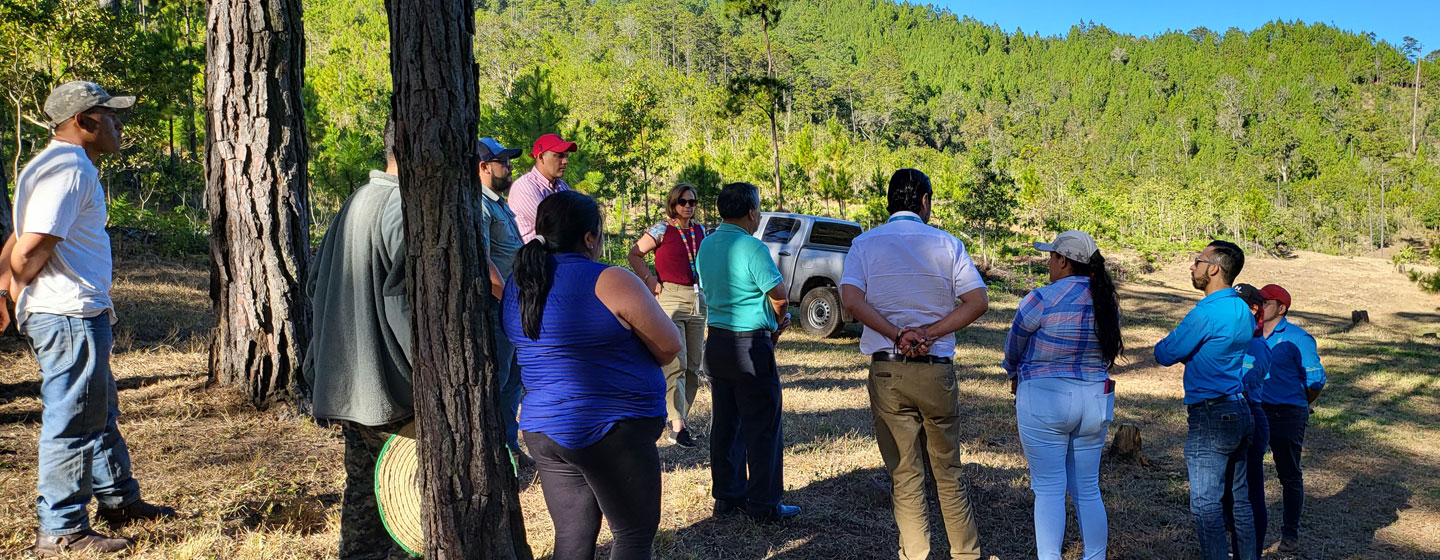First Person: How youth and forests tackle Honduras’ water crisis
Honduras is scrambling to solve ever worsening water shortages in its capital, Tegucigalpa. The answer lies in restoring and conserving the country’s forests.
Montserrat Xilotl, a Regional Technical Advisor in Climate Change Adaptation for the UN Development Programme (UNDP), explains why.

“Forests are nature’s water filters and storage systems. When rain falls, the trees, and vegetation capture and absorb it, allowing it to seep into the ground, replenishing aquifers, supplying drinking water to communities, and supporting agriculture.
Forests also help to regulate the flow of water in rivers and streams. The roots of trees and plants hold the soil together, preventing erosion and ensuring that water flows steadily, reducing the risk of floods and droughts.
Unfortunately, Honduras has seen a notable loss of forest cover over the years, with high levels of deforestation driven largely by unsustainable agriculture and illegal logging, both in return the result of poverty. On top of this, climate-related hazards such as forest fires, pests, and disease, have also been enormously damaging. It’s estimated that from 1990 to 2020, the country lost nine per cent of its forest coverage.
Recognizing the associated threats posed to people, ecosystems, and the economy, Honduras has been looking closely at nature-based solutions with a heavy emphasis on social inclusion.
Earlier this year, I flew to Tegucigalpa to see the work of one, financed by the global Adaptation Fund and implemented by the Ministry of Natural Resources and Environment (SERNA) with support from UNDP, in the country’s central forest corridor.
What I witnessed was inspiring. Young people and women leading the way with innovation and enthusiasm, bringing in local pride and demonstrating how local knowledge provides the best way forward, not only in adapting to climate change but also in caring for their country’s natural resources.

I met these young researchers at a lab at the Universidad Nacional Autónoma de Honduras, the National Autonomous University, which is key to understanding and solving the country’s water crisis.
Through the study of the ecology of water, they were integrating diverse practices to better monitor water sources and quality within the central forest corridor.

The lab we were standing in had been created around 10 years earlier, through an initial collaboration between the ministry and university, supported by the Adaptation Fund and UNDP.
Instead of accepting payment, the university requested scientific equipment to analyse the water that flowed into the city. A department dedicated to researching water ecology and a permanent lab were created, looking at the nexus between water, microbiology, climatology, and physics.
The lab has produced ground-breaking climate information and water modelling. It represents a huge leap forward, one which provides the science which is foundational to addressing the crisis.
I met women producer groups who are developing their own nutrient-rich biofertilizers made from local plants, fungi, and fruits to sell to local markets. I spoke with a young woman who was leading the municipal fire brigade to protect her forests from the increasing incidence of fires. She mentioned the value of the forest to her community and how she had taken pride in stopping several forest fires from escalating. She proudly mentioned how the project had taught her to prepare the forest during fire season, what protocols to take during a fire, and how she is communicating with other women in nearby communities about early detection.
It is promising that the university has secured grant funding to continue its work, including from the International Atomic Energy Agency (IAEA). It has also allowed us, through the new Adaptation Fund project, to commission more ambitious hydrological analyses to better identify water sources along the forest corridor while considering increasing demand and climate change.
As I boarded my flight home to Mexico, it struck me that this is what transformational change looks like – it is young, it is diverse, and it is proactive. I was able to understand why countries’ climate goals, known as nationally determined contributions, or NDCs, that engage youth, women and diverse populations are often more ambitious than those that don’t.
In the fight for a climate-resilient and prosperous future, it is clear that nature and youth are our most powerful assets.
We must nurture the potential of both.”
SDG 15: SUSTAINABLY USE ECOSYSTEMS BY 2030

- Combat desertification, and restore degraded land and soil
- Ensure conservation of mountain ecosystems to enhance their capacity to provide benefits essential for sustainable development
- Promote fair, equitable sharing of and access to benefits related to genetic resources use
- End poaching and trafficking of protected species, and address demand and supply of illegal wildlife products
- Mobilize and increase financial resources to conserve and sustainably use biodiversity and ecosystems and to fund sustainable forest management
Escalating forest losses, land degradation, and species extinction pose severe threats to the planet and people.

